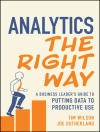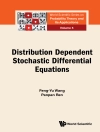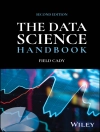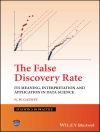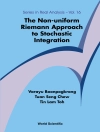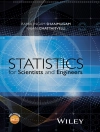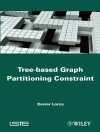ARTIFICAL INTELLIGENCE AND DATA ANALYTICS FOR ENERGY EXPLORATION AND PRODUCTION
This groundbreaking new book is written by some of the foremost authorities on the application of data science and artificial intelligence techniques in exploration and production in the energy industry, covering the most comprehensive and updated new processes, concepts, and practical applications in the field.
The book provides an in-depth treatment of the foundations of Artificial Intelligence (AI) Machine Learning, and Data Analytics (DA). It also includes many of AI-DA applications in oil and gas reservoirs exploration, development, and production. The book covers the basic technical details on many tools used in “smart oil fields”. This includes topics such as pattern recognition, neural networks, fuzzy logic, evolutionary computing, expert systems, artificial intelligence machine learning, human-computer interface, natural language processing, data analytics and next-generation visualization. While theoretical details will be kept to the minimum, these topics are introduced from oil and gas applications viewpoints.
In this volume, many case histories from the recent applications of intelligent data to a number of different oil and gas problems are highlighted. The applications cover a wide spectrum of practical problems from exploration to drilling and field development to production optimization, artificial lift, and secondary recovery. Also, the authors demonstrate the effectiveness of intelligent data analysis methods in dealing with many oil and gas problems requiring combining machine and human intelligence as well as dealing with linguistic and imprecise data and rules.
表中的内容
Foreword xvii
Preface xix
1 Introduction to Modern Intelligent Data Analysis 1
1.1 Introduction 1
1.2 Introduction to Machine Learning 4
1.3 General Example of Machine Learning 8
1.4 E&P Examples of Machine Learning 9
1.5 Objectives of the Book 10
1.6 Outline of Chapters 10
2 Machine Learning and Human Computer Interface 23
2.1 Introduction 23
2.2 Visualization of Machine Learning 24
2.3 Interactive Machine Learning 30
3 Artificial Neural Networks 39
3.1 Introduction 39
3.2 Structure of Biological Neurons 41
3.2.1 Artificial Neurons Structure 42
3.2.2 Integration Function 43
3.2.3 Activation Function 44
3.2.4 Decision Boundaries 46
3.3 Learning and Deep Learning Process for ANN 47
3.3.1 ANN Learning 47
3.3.2 Deep Learning 50
3.4 Different Structures of ANNs 51
3.4.1 Multi-Layer Perceptron (MLP) 53
3.4.2 Radial Basis Function Neural Networks (RBF) 54
3.4.3 Modular Neural Networks (Committee Machines) 55
3.4.4 Self-Organizing Networks 58
3.4.5 Kohonen Networks 61
3.4.6 Generalized Regression (GRNN) and Probabilistic (pnn) 62
3.4.7 Convolutional Neural Network (CNN) 64
3.4.8 Generative Adversarial Network (GAN) 65
3.4.9 Recurrent Neural Network (RNN) 66
3.4.10 Long/Short-Term Memory (LSTM) 67
3.5 Pre-Processing of the ANN Input Data 67
3.5.1 Dimensionality Reduction 69
3.5.2 Artificial Neural Networks (ANN) Versus Conventional Computing Tools (CCT) 70
3.6 Combining ANN with Human Intelligence 70
3.7 ANN Applications to the Exploration and Production (E&P) Problems 73
3.7.1 First Break Picking Seismic Arrivals 74
3.7.2 Porosity Prediction in a CO2 Injection Project 76
3.7.3 CNN for Permeability Prediction 78
3.7.4 Creating Pseudologs 81
3.7.5 Facies Classification with Exhustive PNN 81
3.7.6 Machine Learning for Estimating the Stimulated Reservoir Volume (SRV) 83
4 Fuzzy Logic 85
4.1 Introduction to Fuzzy Logic 85
4.2 Theoretical Foundation and Formal Treatment of Fuzzy Logic 90
4.2.1 Some Definitions in Fuzzy Logic 93
4.2.2 Fuzzy Propositions 94
4.2.3 Thresholding or α-Cut Concept 95
4.2.4 Additional Properties of Fuzzy Logic 96
4.2.5 Fuzzy Extensions of Classical Mathematics 98
4.2.5.1 Fuzzy Averaging 98
4.2.5.2 Fuzzy Arithmetic 99
4.2.5.3 Fuzzy Function and Fuzzy Patches 100
4.2.5.4 Fuzzy K-Means and C-Means or Clustering 103
4.2.5.5 Fuzzy Kriging 105
4.2.5.6 Fuzzy Differential Equations 108
4.2.6 Fuzzy Systems, Fuzzy Rules 109
4.2.6.1 Fuzzy Rules 110
4.2.6.2 Fuzzy Knowledge-Based Systems 112
4.2.7 Type-2 Fuzzy Sets and Systems 114
4.2.8 Computing with Words and Linguistic Variable 116
4.2.8.1 CWW versus Fuzzy Logic 116
4.2.8.2 Linguistic Variables 118
4.2.9 Mining Fuzzy Rules from Examples 120
4.2.10 Fuzzy Logic Software 121
4.3 Oil and Gas Industry Application Domain Discussion 122
4.3.1 Linguistic Goal-Oriented Decision Making (LGODM) to Optimize Enhanced Oil Recovery in the Steam Injection Process 123
4.3.2 Use of Fuzzy Clustering in Perforation Design 124
4.3.3 Stratigraphic Interpretation Using Fuzzy Rules 127
4.3.4 Fuzzy Logic-Based Interpolation to Improve Seismic Resolution 132
4.4 Conclusions 135
5 Integration of Conventional and Unconventional Methods 137
5.1 Strengths and Weaknesses of Different Computing Techniques 137
5.2 Why Integrate Different Methods? 140
5.2.1 Neuro-Fuzzy Methods 141
5.2.1.1 Why Combine NN and FL? 142
5.2.1.2 NN-Based FL Inference 143
5.2.2 Neuro-Genetic Methods 145
5.2.3 Fuzzy-Genetic (FG) 147
5.2.4 Soft Computing – Conventional (SC) Methods 148
5.3 Oil and Gas Applications of NF, NG, FG, CF, and CN 150
5.3.1 NN-CM- Rock Permeability Forecast Using Machine Learning and Monte Carlo Committee Machines 151
5.3.2 (NN-CM) Pseudo Density Log Generation Using Artificial Neural Network 154
5.3.2.1 Well Log Data Preprocessing 155
5.3.2.2 Well Log Data Mining 156
5.3.2.3 Data Postprocessing for Generating Pseudo Density Logs 157
5.3.3 NN-FL- Integrating Neural Networks and Fuzzy Logic for Improved Reservoir Property Prediction and Prospect Ranking 159
5.3.4 (FL-NN-CM) Gas Leak Detection 161
5.3.5 GA-FL for Improving Oil Recovery Factor 162
5.3.6 GA-FL to Improve Coal Mining Process 165
5.4 Conclusions 166
6 Natural Language Processing 167
6.1 Introduction 167
6.2 A Brief History of NLP 168
6.3 Basics of the NLP Method 171
6.3.1 Sentence Segmentation 171
6.3.2 Tokenization 172
6.3.3 Parts of Speech Prediction 172
6.3.4 Lemmatization 173
6.3.5 Stop Words Removal 173
6.3.6 Dependency Parsing 174
6.3.7 Named Entity Recognition 175
6.3.8 Coreference Resolution 175
6.4 Use Cases of NLP 175
6.5 Applications of NLP in the Oil and Gas Industry 177
6.6 Conclusion 193
7 Data Science and Big Data Analytics 195
7.1 Introduction 195
7.2 Big Data 195
7.3 Algorithms and Models in Data Sciences 197
7.3.1 Automated Machine Learning 198
7.3.2 Interpretable, Explainable, and Privacy-Preserving Machine Learning 198
7.4 Infrastructure and Tooling for Data Science 202
7.5 Oil and Gas Focused Issues Associated with Data Science and Big Data High Performance Computing in the Age of Big Data 206
7.5.1 Big Data in Oil and Gas 208
7.5.2 High-Performance Computing for Handling Big Data in Subsurface Imaging 209
7.5.3 Access to Oil and Gas Data 210
8 Applications of Machine Learning in Exploration 213
8.1 Introduction 213
8.1.1 Petroleum System and Exploration Risk Factors 214
8.1.2 Data Acquisition, Processing, and Integration for Exploration 215
8.1.3 Exploration and Appraisal Drilling 217
8.2 AI for Exploration Risk Assessment 218
8.2.1 Petroleum System Risk Assessment 218
8.2.2 Geological Risk Assessment Level of Knowledge and Experience (Lo K) 221
8.3 AI for Data Acquisition, Processing, and Integration in Exploration 224
8.3.1 Auto-Picking for Micro-Seismic Data 224
8.3.2 Facies Classification Using Supervised CNN and Semi-Supervised GAN 226
8.3.3 Generating Gas Chimney Cube Using MLP ANN 227
8.3.4 Reservoir Geostatistical Estimation of Imprecise Information Using Fuzzy Kriging Approach 230
8.3.5 Fracture Zone Identification Using Seismic, Micro-Seismic and Well Log Data 232
9 Applications in Oil and Gas Drilling 239
9.1 Real-Time Measurements in Drilling Automation 239
9.2 Event Detection in Drilling 243
9.3 Rate of Penetration Estimations 251
9.4 Estimation of the Bottom Hole and Formation Temperature by Drilling Data 255
9.5 Drilling Dysfunctions 258
9.6 Machine Learning Applications in Well Drilling Operations 262
9.7 Conclusion 269
10 Applications in Reservoir Characterization and Field Development Optimization 271
10.1 Introduction 271
10.1.1 Reservoir Characterization 273
10.1.1.1 Porous Media Characterization 275
10.1.1.2 Porosity 278
10.1.1.3 Permeability 278
10.1.1.4 Permeability-Porosity Relationship 281
10.1.2 Machine Learning Applications for Reservoir Characterization 282
10.1.2.1 Reservoir Modeling 291
10.1.2.2 Capabilities of Data Mining 293
10.1.2.3 Computational Intelligence in Petroleum Application 294
10.1.2.4 Computational Intelligence in Permeability and Porosity Prediction 295
10.1.2.5 Hybrid Computational Intelligence (HCI) 296
10.1.2.6 Ensemble Machine Learning for Reservoir Characterization 297
10.1.2.7 Prediction of Sand Fraction (SF) by Using Machine Learning 300
10.1.2.8 Machine Learning Application in Classification of Water Saturation 301
10.1.2.9 Physics-Informed Machine Learning for Real-Time Reservoir Management 302
10.1.2.10 Well-Log and Seismic Data Integration for Reservoir Characterization 303
10.1.2.11 Machine Learning for Homogeneous Reservoir Characterization 304
10.1.2.12 The Gradient Boosting Method for Reservoir Characterization 305
10.1.2.13 The Parameterizing Uncertainty for Reservoir Characterization 306
10.1.2.14 Geochemistry and Chemostratigraphy for Reservoir Characterization 307
10.2 Conclusions 310
11 Machine Learning Applications in Production Forecasting 313
11.1 Introduction 313
11.2 Analytical Solution 315
11.2.1 Type Curves 316
11.2.2 Limitations 317
11.3 Numerical Solution 317
11.3.1 Limitations 318
11.3.2 Machine Learning Applications 319
11.4 Decline Curve Analysis (DCA) 320
11.4.1 Arps Method 320
11.4.2 Method Modifications of the Arps Method 321
11.4.3 Limitations 326
11.4.4 Machine Learning Applications 327
11.5 Data-Driven Solutions 330
11.5.1 Sensitivity Analysis 331
11.5.2 Machine Learning Applications 331
11.5.3 Limitations 349
11.6 Conclusion 350
12 Applications in Production Optimization, Well Completion and Stimulation 353
12.1 Introduction 353
12.2 Production Optimization 354
12.3 Stimulation 358
12.4 Well Completion 363
13 Machine Learning Applications in Reservoir Engineering and Reservoir Simulation 369
13.1 Introduction 369
13.2 Fluid Properties Estimation with Machine Learning Methods 370
13.2.1 Machine Learning Applications in Reservoir Simulation 376
13.2.2 Machine Learning Applications in Geothermal Reservoir Engineering 390
13.3 Machine Learning Applications in Well Testing 397
13.4 Conclusion 403
14 Machine Learning Applications in Artificial Lift 405
14.1 Introduction 405
14.2 Big Data and Analytical Solutions in Drilling Operations 407
14.3 Machine Learning 408
14.3.1 Using Machine Learning in the Oil and Gas Industry 410
14.3.2 Failure Prediction Frameworks and Algorithms for Artificial Lift Systems 413
14.4 Artificial Lift 415
14.4.1 Brief Overview of Production Systems Analysis 416
14.4.2 Types of the Artificial Lift Systems 418
14.4.2.1 Plunger Lift 418
14.4.2.2 Gas Lift-Continuous and Intermittent 419
14.4.2.3 Pumps 421
14.4.3 Artificial Lift Applications, Monitoring, and Automation Services 424
14.5 Conclusion 429
15 Machine Learning Applications in Enhanced Oil Recovery (EOR) 431
15.1 Introduction 431
15.2 Enhanced Oil Recovery 432
15.2.1 Thermal Methods 437
15.2.2 Chemical Methods 439
15.2.3 Gas Methods 441
15.2.4 Microbial Methods 444
15.3 Enhanced Oil Recovery (EOR) Reservoirs 445
15.4 The Economic Value of EOR 453
15.5 Simulation Models 454
15.6 Machine Learning (ML) 455
15.7 Machine Learning in Enhanced Oil Recovery (EOR) Applications 458
15.8 Machine Learning in Enhanced Oil Recovery (EOR) Screening 462
15.9 Applications 465
15.10 Software 467
15.11 Conclusion 468
16 Conclusions and Future Directions 471
16.1 Technology Advances in Artificial Intelligence and Data Science 471
16.1.1 Technology Advances in Artificial Intelligence and Data Science 471
16.1.2 Future Directions of Machine Learning and Human-Computer Interface 471
16.1.3 Future Directions of Artificial Neural Networks 474
16.1.4 Future Directions of Fuzzy Logic 476
16.1.5 Future Directions of Integrated AI Techniques 477
16.1.6 Future Directions of Natural Language Processing 479
16.1.7 Future Directions of Data Science and Big Data Analytics 480
16.2 Future Trends in the Energy Applications of Artificial Intelligence and Data Science 482
16.2.1 Future Trends in Exploration Applications of AI-DA 483
16.2.2 Future Trends in Drilling Applications of AI-DA 484
16.2.3 Future Trends in Reservoir Characterization Applications of AI-DA 486
16.2.4 Future Trends in Production Forecasting Applications of AI-DA 487
16.2.5 Future Trends in Production Optimization, Well Completion and Stimulation Applications of AI-DA 488
16.2.6 Future Trends in Reservoir Engineering and Simulation Applications of AI-DA 489
16.2.7 Future Trends in Artificial Lift Applications of AI-DA 491
16.2.8 Future Work for Machine Learning Applications in EOR 492
References 495
Index 555
关于作者
Fred Aminzadeh is an expert in artificial intelligence and energy. He was professor at the University of Houston and University of Southern California. He worked at d GB, Unocal (now part of Chevron) and Bell Laboratories. His work experience includes fossil energy, geothermal energy, and carbon sequestration. He served as the president of Society of Exploration Geophysicists. He has authored over 15 books and holds several patents. He was the editor in chief of The Journal of Sustainable Energy Engineering. Currently, he is president of FACT, an energy services company. He is also a member of technical advisory board of DOE/NETL’s SMART initiative and an adjunct Professor at the University of Wyoming.
Cenk Temizel is a Sr. Reservoir Engineer with Saudi Aramco. He has over 15 years of experience in reservoir simulation, data analytics, smart fields, unconventional, enhanced oil recovery with Aera Energy, Schlumberger, and Halliburton in the Middle East, the U.S., and the U.K. He is the recipient of the Aramco Unconventional Resources Technical Contribution Award (2020), 2nd place at SPE Global R&D Competition at ATCE 2014, and the Halliburton Applause Award in Innovation (2012). He holds an MS degree in Petroleum Engineering from University of Southern California and was a research assistant at Stanford University before joining the industry.
Yasin Hajizadeh is the founder and CEO of nowos, a boutique Texas based technology consulting firm with a focus on software product management and workforce development planning for industry 4.0. Previously, he was a program and product manager of Azure ML and Io T at Microsoft. Yasin has also worked for Schlumberger as a data scientist and reservoir engineer, University of Calgary as an associate professor of computer science, and CMG as an optimization and uncertainty quantification scientist. He holds a Ph D in petroleum engineering from Heriot-Watt University, and a Masters in technology management from Memorial University of Newfoundland.




